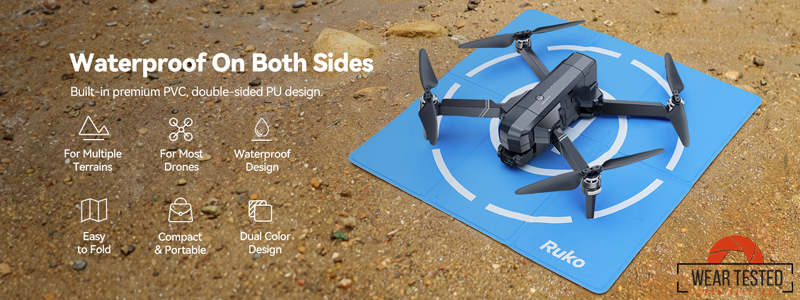
Using a drone landing pad offers several key advantages for drone operators:
Protection for Drone Components
- Prevents dust, dirt, and sand from entering the drone’s motors, which can cause damage or failure.
- Protect the camera lens and filters from debris and moisture.
- Safeguards rotor blades from striking tall grass, small branches, or other obstacles.
Enhanced Safety
- Provides a stable, level surface for takeoff and landing, reducing the risk of accidents.
- Offers a clear, visible target for precise landings.
- Help prevent the drone from tipping over on uneven surfaces.
Improved Precision & Control
- Assists in aligning the drone accurately during takeoff and landing.
- Serves as a reference point for mission planning and coordination.
Environmental Considerations
- Minimizes the drone’s impact on surrounding vegetation and landscapes.
- Flatten grass and removes any potential hazards.
Visibility & Identification
- High-contrast colors make the landing area easily visible from the air.
- Alerts nearby people to the drone’s takeoff and landing zone.
Convenience & Portability
- Many landing pads are foldable and come with carrying bags for easy transport.
- Quickly set up and pack away.
Versatility
- Suitable for various environments, including areas with dust, sand, or wet surfaces.
Professionalism
- Demonstrates control and skill in drone operation.
- Enhances the overall efficiency of drone operations.
By using a landing pad, drone operators can significantly improve the safety, precision, and longevity of their equipment while also minimizing environmental impact and presenting a more professional image.
